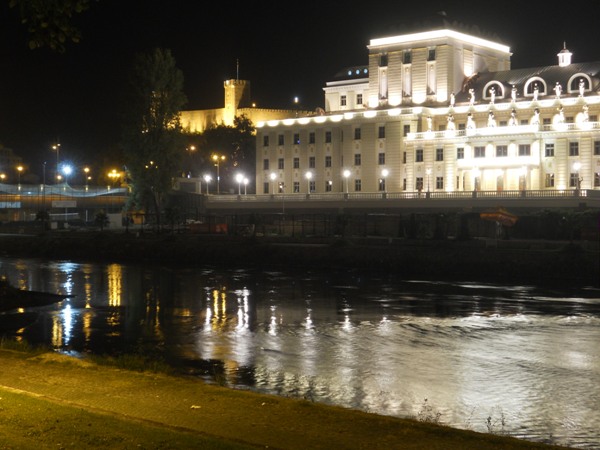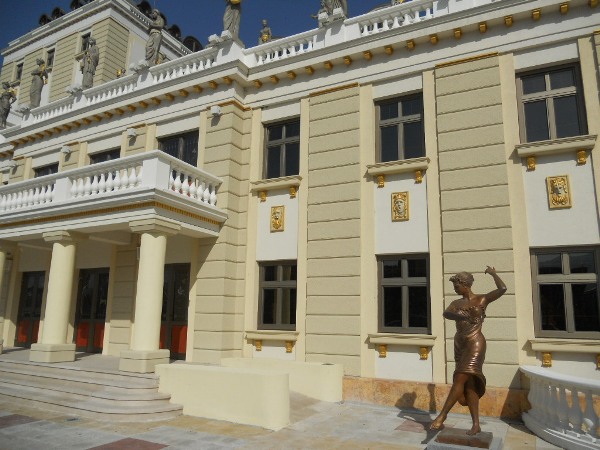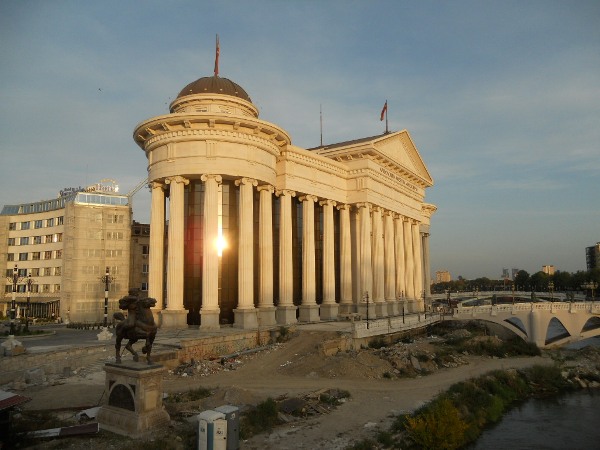
Take a walk for the first time through central Skopje and you’re bound to scratch your head in bewilderment. Mammoth statues of warriors adorn the main public spaces, while neo-classical palaces dominate the banks of the Vardar river. Figures of dozens of poets, musicians and artists line the bridges and embankments. And the bulldozers and rubble hint at more to come before this grand vision is finally realised.
Skopje 2014 is the name given to a project that is widely assumed to have cost around €500 million, although official figures appear to be elusive. That Macedonia has a GDP of around €8 billion puts this grand project into alarming context. Throw in an unemployment rate of around 30% and an infrastructure in desperate need of investment and it’s no surprise that some critics are labelling this extravagance as nothing short of insanity.
So who is happy at the new Skopje?
Construction companies are sure to be delighted – at least those involved in creating these enormous palaces, offices and public monuments. Many residents are pleased that a largely drab capital, mostly destroyed by a major earthquake in 1963 and rebuilt under the worst principles of communist-era design, has finally gained some distinctive character, even if it’s not to everyone’s taste. Tourists are no doubt intrigued by the size and scale of the new creations, with online references to a nationalist theme park and Las Vegas easy to find. The transformation is so recent that most existing guidebooks don’t even hint at its existence. There is hope that the new Skopje will attract many more international visitors in the coming years.

Not so happy are those who are at the sharp end of the modest Macedonian public purse. €500 million could go a long way in building schools, hospitals and better roads. A statue of a man on a horse, however tall it is and however many fountains spout from its base, has limited public value, especially for those living outside of the capital.
Also voicing dissent are some sections of Macedonia’s patchwork of citizens. Around a third of the proportion is Muslim, many people are of Albanian origin and there is a significant Roma minority; you wouldn’t guess at this ethnic mixture by looking at the many national figures that make up the Skopje 2014 depiction of Macedonian history.
The Greeks are also unhappy – already fuming at what they see as Macedonia’s attempts to steal their history, it’s a barely concealed mystery that the two most prominent figures portrayed in giant-size bronze are Alexander the Great and Philip of Macedon. The ongoing dispute between Greece and Macedonia (or as the Greeks insist on them being named, the Former Yugoslav Republic of Macedonia) is preventing EU membership and the glorification of these figures as Macedonian heroes is hardly likely to mend relations.
Meanwhile, a stone’s throw from the 25m high giant warrior fountain statue, said alone to cost €7.5 million, lies a modest museum and chapel dedicated to the life of Skopje’s most famous citizen, Mother Teresa. It’s all too tempting to wonder what she would have made of the recent transformation of the city of her birth.
I’ll leave you with a few more photos of Skopje as it looks in October 2013.












